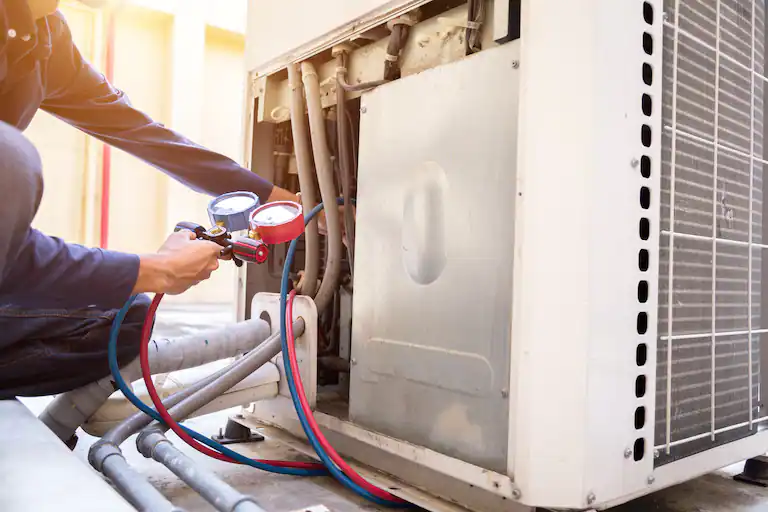A bulging wall can be a concerning issue for homeowners, as it may indicate underlying structural problems that must be addressed promptly. Whether caused by foundation issues, water damage, or poor construction practices, a bulging wall requires careful assessment and proper repair to ensure the stability and safety of the structure. This article explores the common causes of bulging walls, signs to look out for, and the repair options available to homeowners facing this issue.
Understanding the Causes of Bulging Walls

Several factors can contribute to the development of a bulging wall:
Foundation Issues:
Problems with the foundation, such as settlement, shifting, or inadequate support, can cause walls to bulge or bow outward. This may occur due to soil movement, poor drainage, or improper construction practices.
Water Damage:
Water infiltration and moisture buildup can weaken the structural integrity of walls, leading to bulging, warping, or buckling. Common sources of water damage include leaks, plumbing issues, flooding, and condensation.
Structural Instability:
Inadequate structural support, substandard materials, or improper construction techniques can result in weak or unstable walls prone to bulging or deformation over time.
Excessive Load:
Excessive weight or pressure exerted on a wall, such as from heavy furniture, equipment, or construction materials, can cause it to bulge or bow outward, especially if the wall is not properly reinforced or supported.
Signs of a Bulging Wall
Identifying a bulging wall early is essential for addressing the issue before it escalates into a more serious problem. Common signs of a bulging fence include:
Visible Bowing or Bulging:
The most obvious sign of a bulging wall is a noticeable outward curvature or protrusion in the wall’s surface. This may be accompanied by cracking, buckling, or distortion of the wall material.
Cracks and Fractures:
Cracks, fissures, or fractures in the wall surface, especially near corners, windows, or doors, may indicate structural movement or stress that could lead to bulging.
Uneven Floors or Ceilings:
In some cases, a bulging wall may cause adjacent floors or ceilings to become uneven or sloped, indicating underlying structural issues that must be addressed.
Sticking Doors or Windows:
Difficulty opening or closing doors and windows, or gaps and misalignments around door frames and window casings, may indicate structural movement or distortion caused by a bulging wall.
Moisture Damage:
Water stains, mold growth, or dampness on the wall’s surface may indicate water infiltration or moisture buildup that could contribute to bulging or deformation over time.
Repair Options for Bulging Walls
Repairing a bulging wall requires careful assessment and proper remediation to address the underlying cause and restore the wall’s structural integrity. Depending on the severity of the damage and the underlying cause, repair options may include:
Foundation Repair:
If the bulging wall is caused by foundation issues, such as settlement or shifting, foundation repair may be necessary to stabilize the structure and prevent further movement. This may involve techniques such as underpinning, hydraulic lifting, or soil stabilization to address the underlying cause of the problem.
Waterproofing and Drainage Improvement:
If water damage contributes to the bulging wall, waterproofing measures such as sealing cracks, installing drainage systems, and improving surface drainage may be necessary to prevent further moisture infiltration and mitigate future damage.
Structural Reinforcement:
Strengthening the wall with additional structural support, such as steel bracing, reinforcement beams, or wall anchors, may be necessary to prevent further bulging and ensure the stability of the structure.
Wall Replacement or Reconstruction:
In severe cases where the damage is extensive or irreparable, wall replacement or reconstruction may be necessary to restore the structure’s integrity. This may involve removing and rebuilding the damaged wall material using durable, high-quality materials and proper construction techniques.
Cosmetic Repairs:
Once the underlying structural issues have been addressed, cosmetic repairs such as patching cracks, filling gaps, and repainting the wall surface may be necessary to restore its appearance and finish.
Consulting a Professional
Repairing a bulging wall is a complex and potentially hazardous task that requires specialized knowledge, skills, and equipment. Homeowners facing this issue should consult with a qualified structural engineer or experienced contractor who can assess the extent of the damage, identify the underlying cause, and recommend appropriate repair options. By seeking professional guidance and assistance, homeowners can ensure that the repair process is carried out safely and effectively using industry best practices.




